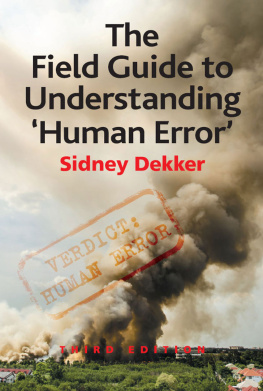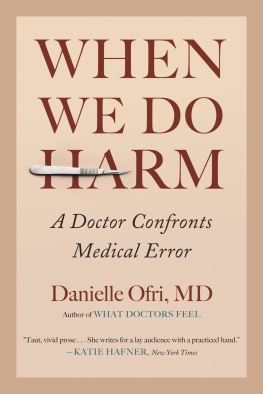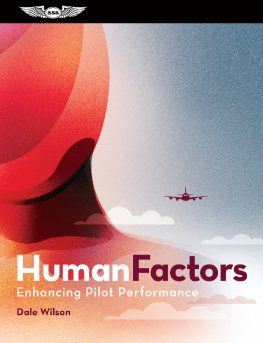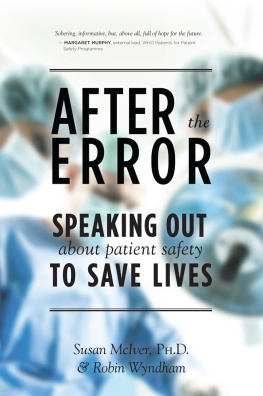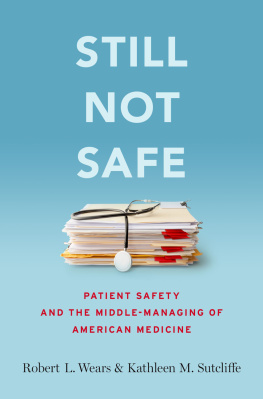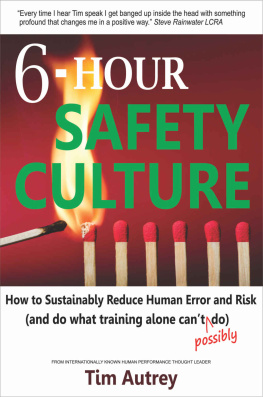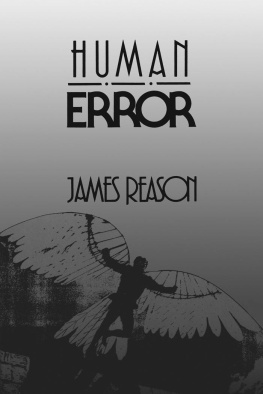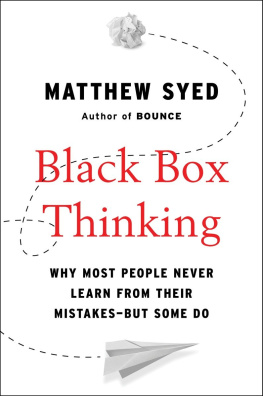Contents

THE FIELD GUIDE TO UNDERSTANDING HUMAN ERROR
Its in the worlds best interest to read Dekkers book. The Field Guide is nothing short of a paradigm shift in thinking about human error, and in my domain of software and Internet engineering, it should be considered required reading. This Third Edition is much better than the Second, and the layout of the material is far more accessible.
John Allspaw, SVP, Infrastructure and Operations, Etsy
If you design equipment or operating procedures, if you investigate accidents or deal with safety, this is an essential book. Sidney Dekker, a leading world authority on human error has enhanced his already exceptional Field Guide to be a concise, readable guide to both design of equipment and procedures and also the analysis of mishaps. The label human error is misleading and its use prevents discovery and correction of the true underlying causes of incidents. So read about hindsight bias, about the difference between the view from inside the system rather than from outside, and about difference between the blunt end (where you should do your work) and the sharp end (where people tend to focus). Read, learn, and put these ideas into practice. The results will be fewer incidents, less damage, less injury.
Don Norman, author of The Design of Everyday Things
The Third Edition of Sidney Dekkers Field Guide to Understanding Human Error provides a solid practical framework for anyone wanting to make sense of safety science, human factors analysis, and the New View approach to conducting investigations of incidents and accidents. The trademark direct and passionate style that is common in Dekkers work focuses on the circumstances of frontline operators and managers working in complex systems, as well as the challenges of the safety investigator. Dekker does not mince his words (Any human factors investigation that does not take goal conflicts seriously does not take human work seriously) and is clearly supportive both of sharp end workers, who are tasked with creating safety in the face of resource constraints in complex systems, as well as the investigators, charged with making sense of events that often seem surprising and unpredictable. Several new topics are introduced and enrich the earlier versions of The Field Guidefor instance the chapter on creating a safety department presents important principles for those with the courage to take on such a daunting task. This will be an invaluable resource for any organization serious about understanding and improving the safety of their operations.
Dr Robert Robson, Principal Advisor, Healthcare System Safety and Accountability, Inc.
When things go wrong in organisations, one thing is almost always found in the postmortem: human error (in various guises). But one only needs to scratch the surface of system failures to understand that things are not so straightforward. What seems to make sense as a causal catch-all for our everyday slips and blunders snaps when stretched; it fails to explain the context and complexity of our work and systems.
There is a better way. In this important book, Sidney Dekker conveys a practical approach for life after human error. It is both humanistic and systemic; it treats people holistically and non-judgementally, while considering system conditions and dynamics in context. If you are prepared to suspend your own preconceptions and reactions to failure this book will repay you with a practical, highly readable and deeply humane approach to dealing with failure.
Steven Shorrock, European Safety Culture Program Leader, EUROCONTROL
Comments on the Second edition:
Next time Im lecturing students, Ill be recommending The Field Guide as required reading! Well done.
Barry Kirwan, System Safety and Human Error, Eurocontrol, France; Co-editor of Changing Regulation: Controlling Risks in Society and Human Factors Impacts in Air Traffic Management
It is accessible, practical, eminently readable and will be of great use to safety practitioners whatever their background.
Health & Safety at Work, July 2007
This past year I read your book The Field Guide to Understanding Human Error based on a recommendation of a colleague. I must admit it is one of the best book that I have read on accident prevention and safety. I have been practicing as a construction safety professional for 17 years and have struggled to accurately and completely articulate the concepts you so eloquently describe in your book. Although it draws many examples from an aviation safety standpoint, your book stands up brilliantly as a framework for understanding human error and accident prevention in any industry. Subsequently, I am using it as the text for my course Safety in the Construction Industry here at Columbia this fall.
The construction industry is so very stuck in the world of the Old View. Convincing construction management professional that removing bad apples is not the answer is a tough sell. Your book is making my job quite a bit easier. Thank you.
Ray Master, Columbia University, USA
I have every executive in the entire Department of Energy reading The Field Guide as we speak.
Todd Conklin, Los Alamos National Laboratory
No matter if the reader is an upper level executive in an aerospace company, a member of an accident investigation team, a safety engineer, or a university student, Sidneys Field Guide is equally as useful. This book presents important ideas for those who regulate human factors investigation and research, making it an essential read for the academician, the research analyst, and the government regulator.
International Journal of Applied Aviation Studies, Vol. 7, No. 2
The Field Guide to Understanding Human Error
Third Edition
SIDNEY DEKKER
Griffith University, Australia

CRC Press
Taylor & Francis Group
6000 Broken Sound Parkway NW, Suite 300
Boca Raton, FL 33487-2742
2014 by Sidney Dekker
CRC Press is an imprint of Taylor & Francis Group, an Informa business
No claim to original U.S. Government works
Printed on acid-free paper
Version Date: 20160513
International Standard Book Number-13: 978-1-4724-3904-8 (Hardback) 978-1-4724-3905-5 (Paperback)
This book contains information obtained from authentic and highly regarded sources. Reasonable efforts have been made to publish reliable data and information, but the author and publisher cannot assume responsibility for the validity of all materials or the consequences of their use. The authors and publishers have attempted to trace the copyright holders of all material reproduced in this publication and apologize to copyright holders if permission to publish in this form has not been obtained. If any copyright material has not been acknowledged please write and let us know so we may rectify in any future reprint.
Except as permitted under U.S. Copyright Law, no part of this book may be reprinted, reproduced, transmitted, or utilized in any form by any electronic, mechanical, or other means, now known or hereafter invented, including photocopying, microfilming, and recording, or in any information storage or retrieval system, without written permission from the publishers.
For permission to photocopy or use material electronically from this work, please access www.copyright.com (http://www.copyright.com/) or contact the Copyright Clearance Center, Inc. (CCC), 222 Rosewood Drive, Danvers, MA 01923, 978-750-8400. CCC is a not-for-profit organization that provides licenses and registration for a variety of users. For organizations that have been granted a photocopy license by the CCC, a separate system of payment has been arranged.

